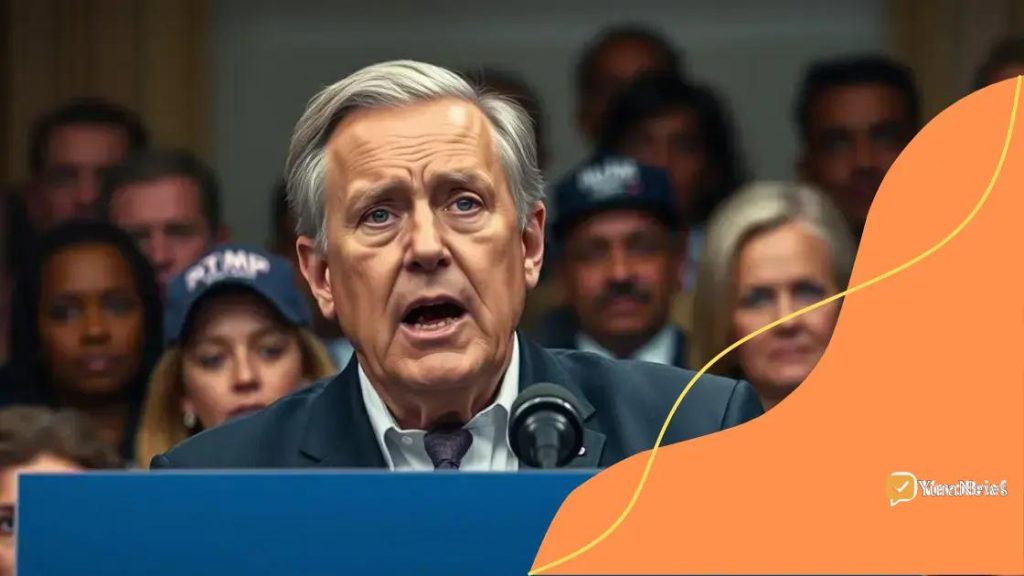Slight dip in president’s approval ratings raises concerns

Anúncios
A slight dip in President’s approval reflects changing public sentiment, influenced by economic conditions, policy decisions, and social issues, which in turn affects future governance and policy focus.
A slight dip in President’s approval has caught the attention of many. What does this mean for his administration and the public? It’s worth diving deeper into the factors at play.
Anúncios
Understanding the current approval ratings
Understanding the current approval ratings is crucial for grasping public sentiment. These ratings offer insight into how citizens perceive their leaders. By analyzing these numbers, we can understand the factors influencing public opinion.
What are approval ratings?
Approval ratings reflect how well the public thinks a president is doing. They are usually measured by polls that ask citizens if they approve or disapprove of the President’s job performance.
These ratings can change frequently due to various reasons. Social issues, economic performance, and international affairs often influence how people feel about their leaders.
Anúncios
Factors that influence approval ratings
- Economic Conditions: When the economy is doing well, approval ratings tend to rise.
- Major Events: Significant events, like crises or achievements, can lead to sharp changes in approval.
- Public Communication: How effectively the President communicates also impacts public perception.
- Policy Decisions: Implementing popular policies can boost a leader’s ratings.
The public’s mood is often reflective of personal experiences. When families feel secure in their jobs, they are more likely to approve of their leader. Conversely, during challenging times, disapproval can surge.
Additionally, approval ratings are not just about numbers. They signify whether the president’s message resonates with the people. Tracking these ratings provides a means to assess political health and areas needing adjustment.
In short, understanding the current approval ratings helps us see how citizens align with their leaders and the topics that matter to them. These insights can guide future decisions and policies.
Factors contributing to the slight dip
Several factors are contributing to the slight dip in the President’s approval ratings. Understanding these elements can help us grasp the shifting public sentiment. Sometimes, a single event can change how people feel.
Economic Challenges
One major factor affecting approval is the economy. When job growth slows or prices rise, citizens often feel less optimistic. These economic pressures impact how they view their leaders.
Policy Decisions
Another aspect is policy decisions. When new laws are introduced, public reaction can be mixed. If policies do not align with public expectations, approval ratings may drop.
- Health care reforms: Changes in health care can stir strong opinions, influencing approval.
- Tax policies: Adjustments in tax rates can affect families’ financial situations, swaying their views.
- Foreign relations: How the President handles international issues can lead to public disapproval if perceived poorly.
Additionally, the media plays a crucial role in shaping public perception. If negative news dominates, it might lead to lower approval ratings. Furthermore, social media amplifies opinions, impacting how people view political leaders.
Finally, the personal lives of leaders can influence their ratings too. Scandals or controversies can quickly shift public opinion. As a result, approval ratings fluctuate based on both personal and professional news.
Public reactions and sentiments

Public reactions and sentiments play a crucial role in shaping political landscapes. When the President’s approval rating changes, the public’s emotional response often reflects their trust and confidence in leadership. Understanding these reactions can reveal much about societal values.
Emotional Responses
People often express strong emotions when it comes to politics. For some, a dip in approval ratings can lead to disappointment or frustration. Others might feel relief, particularly if they disagreed with previous policies. Understanding these emotional responses helps in analyzing the broader political climate.
Social Media Impact
In today’s world, social media amplifies public sentiment. Platforms like Twitter and Facebook allow people to express opinions rapidly. When approval ratings drop, negative sentiments can spread quickly. Social media trends often reflect real-time reactions, giving insight into how the public feels.
- Viral Criticism: Posts that criticize decisions can go viral, leading to further conversation.
- Support Campaigns: Conversely, supporters may rally online to defend the President.
- Apathy: Some citizens may show indifference, believing their opinions won’t affect change.
Surveys and polls also paint a clearer picture of public sentiment. Reports often reveal that specific demographics respond differently. For instance, younger voters might react more strongly to social issues than older generations.
Understanding public reactions is essential for leaders aiming to regain trust. Tracking sentiment changes can guide future actions and communication strategies, ensuring leaders remain connected to their constituents’ feelings.
Historical context of presidential ratings
The historical context of presidential ratings provides insight into how public opinion has evolved over time. Understanding this background helps us see trends and changes in political dynamics. Approval ratings are not a new phenomenon; they have been tracked for several decades.
Early Presidential Ratings
In the past, gathering public opinion was more challenging. Before modern polling, leaders relied on newspapers and public speeches to gauge sentiments. With the rise of polling, detailed records became available, allowing for deeper analysis of public approval.
Trends Over Time
Throughout history, presidential ratings have fluctuated due to various events. Wars, economic crises, and social movements significantly impacted approval. For instance, during periods of national hardship, such as the Great Depression, approval ratings often dipped as citizens struggled.
- World War II: President Franklin D. Roosevelt enjoyed high ratings during the war due to strong leadership.
- Vietnam War: The Vietnam War caused a dramatic drop in President Lyndon B. Johnson’s ratings, reflecting public unrest.
- Political Scandals: Scandals like Watergate led to plummeting approval ratings for President Nixon.
Modern polling techniques, such as telephone surveys and online polls, have made it easier to track these ratings in real time. Today’s ratings provide a snapshot of public mood and can change quickly based on current events.
Overall, understanding the historical context of presidential ratings reveals patterns about how different factors influence public opinion. This knowledge can help predict future approval trends as political climates shift.
Implications for future policies
The implications for future policies are closely tied to the current state of presidential approval ratings. When approval ratings fluctuate, they can significantly affect how policies are shaped and implemented. Understanding these connections is vital for predicting future political strategies.
Policy Adjustments Based on Approval
When a President faces a dip in approval, they may reconsider their current policies. A change in public sentiment can lead to a reevaluation of priorities. For example, leaders often adjust their messages to better align with public expectations, aiming to recover lost support.
Focus on Key Issues
Approval ratings can highlight which issues resonate most with the public. Leaders typically respond by focusing on popular topics, such as healthcare reform or job creation. This shift ensures that the President addresses the concerns of the citizens actively, potentially boosting approval ratings.
- Responsive legislation: Proposing laws that directly respond to public worries can help restore confidence.
- Increased communication: Open dialogue with the public through town halls or social media can create transparency.
- Listening tours: Engaging with communities to understand their needs reinforces a sense of connection.
Moreover, the changing political landscape often requires leaders to adapt. If public dissatisfaction continues, it may push them to reconsider their alliances and approach. In turn, this shift can impact legislative outcomes and the overall effectiveness of governance.
In summary, understanding how current approval ratings shape future policies is essential for any administration. This relationship indicates how leaders can respond to public needs and expectations, ensuring continued political viability.
FAQ – Frequently Asked Questions about Presidential Approval Ratings
What are presidential approval ratings?
Presidential approval ratings measure how the public feels about the President’s job performance.
How do approval ratings impact policy decisions?
Approval ratings influence leaders to adjust policies to better align with public expectations and concerns.
What factors affect presidential approval ratings?
Factors include economic conditions, social issues, and major events that impact public sentiment.
Why is public sentiment important in a democracy?
Public sentiment reflects citizens’ trust in their leaders and guides political actions, ensuring responsiveness and accountability.